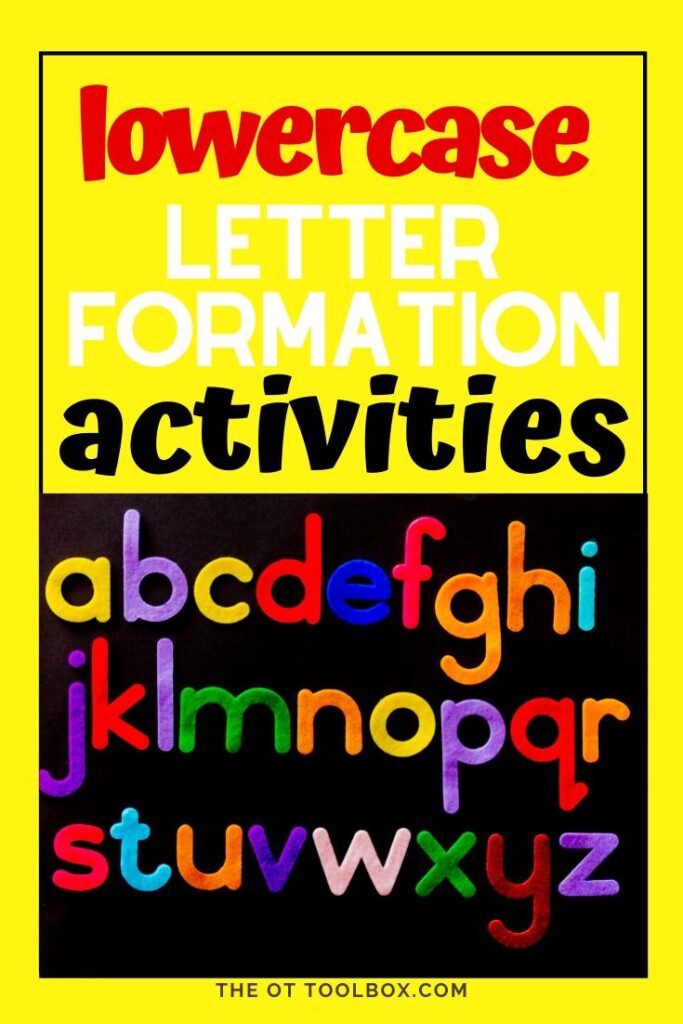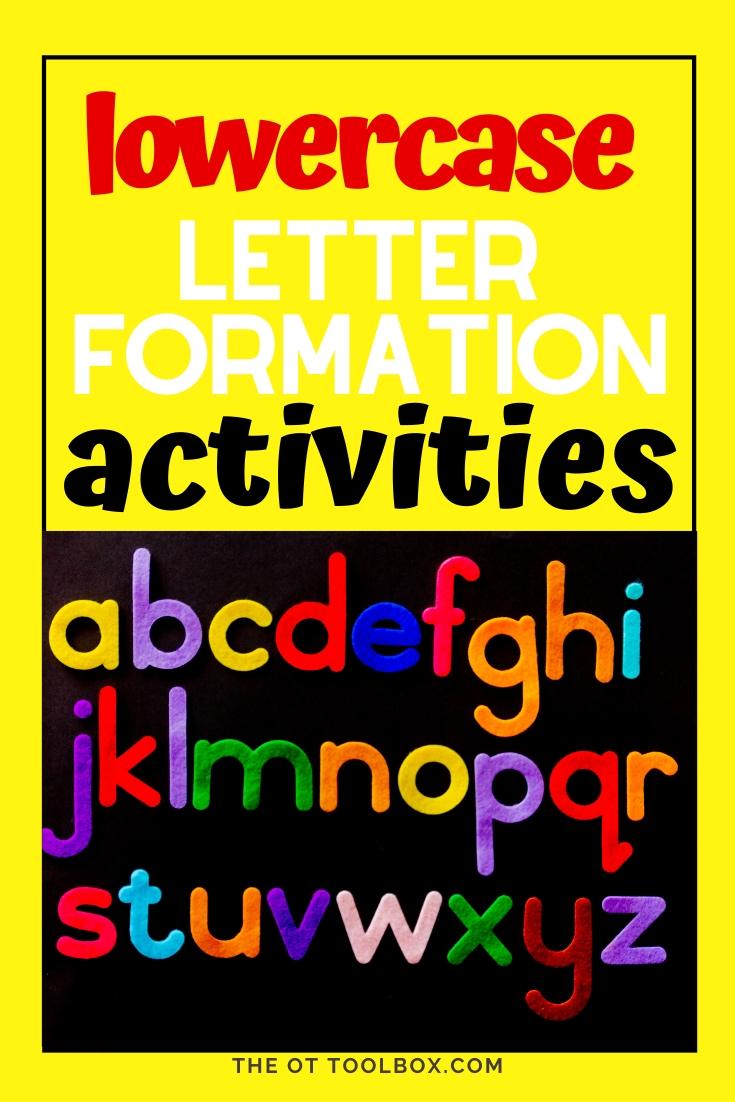Teaching kids to write lowercase letters can be a tricky task. Kids are exposed to different techniques depending on if they went to preschool or not. Some children pick up on lowercase letter formation easily and others struggle with reversals, placement on lines, and accurate letter formation. Today, I’ve got some tips and tricks to teach kids how to write lowercase letters and a tool that kids will love.

Lowercase Letter Formation
Teaching lowercase letter formation can be fun! We’ve shared quite a few ways to use creative activities in teaching kids to write letters here on the website. One such activity is using a sensory means with baked cotton swabs.
Like we talked about in yesterday’s play-based learning post, we know that adding movement, play, and a creative component to learning allows kids to engage with learning in a way that allows children to truly benefit from the learning experience.
Ways to work on lowercase letter formation
Using play and movement in working on letter formation takes just a little out of the box thinking. Here are some ways to teach letter formation with movement and play.
Use a sensory writing tray to teach lowercase letters.
Add movement! Add motor components to teaching letter formation as kids learn how to form big lines down, curves, and slanted lines. Letters can be acted out with letter formation rhymes or with themes.
Use a color by letter worksheet to work on fine motor skills and the letter discrimination skills needed for connecting a lowercase letter to an uppercase letter.
Build lowercase letters with play dough, slime, wikki stix, yarn, or paper strips/paper curves.
Trace and then re-trace the letters on a dry erase board. Rainbow writing offers several chances to practice letter formation.
Trace letters with a finger. Then use finger paint, pudding, dish soap, lotion, or cooking oil.
Want an easy, on-the-go tool for working on lowercase letter formation in a fun and engaging way? I’ve got a fun way to help…
Lowercase Letter Formation Kit
Muscle Movers are a tools for working on letter formation with a focus on movement, motor planning, gross motor skills, and play.
Heavy duty laminate cards with letters on one side, unique animals and activities on the other – the educational opportunities are endless.
Use the cards for letter recognition and getting the wiggles out, add Wikki stix or PlayDoh to allow your Little Learner to use their fine motor skills to form the letters on the card and finally practice with the included dry erase pen.
I Can Build Letters! Magnets (with a magnetic dry erase board)– This set includes hands on letter building with colorful lines and curves used to work on letter formation. These colorful, super-strong magnets allow help improve problem solving and fine motor skills while visually supporting letter formation. These can be used on any magnetic surface.
I Can Build Letters guide– Use this guide as a companion to the I Can Build Letters! Magnets. Your child can start by building the letters on top of each guide on a regular surface, progress to a magnetic surface and then ultimately build letter puzzles with the color builder guide
I Can Write Letters! Workbook– Little Learners start writing using Fundanoodle’s zip, zoom, and buzz terminology. With our grid paper, they learn how to keep their letter a consistent size and we introduce the letters from easiest to hardest to write to develop confidence. And each book includes a series of practice pages and a reward sticker system
The Fundanoodle Letter Fun Kits come in a colorful zippered tote for learning on the go!
More lowercase letter writing activities
Some of the smartest and most creative folks I know are the readers of The OT Toolbox. I asked readers to tell me sensory strategies they personally love and use to address sensory modulation. Scroll through the comments…you might just find some new sensory strategies that will work for you! Hopefully we can learn from one another!
Also, check out these other soy suggestions based on therapeutic development through play.
- Fine Motor Toys
- Gross Motor Toys
- Pencil Grasp Toys
- Toys for Reluctant Writers
- Toys for Spatial Awareness
- Toys for Visual Tracking
- Toys for Sensory Play
- Bilateral Coordination Toys
- Games for Executive Functioning Skills
- Toys and Tools to Improve Visual Perception
- Toys to Help with Scissors Skills
- Toys for Attention and Focus



